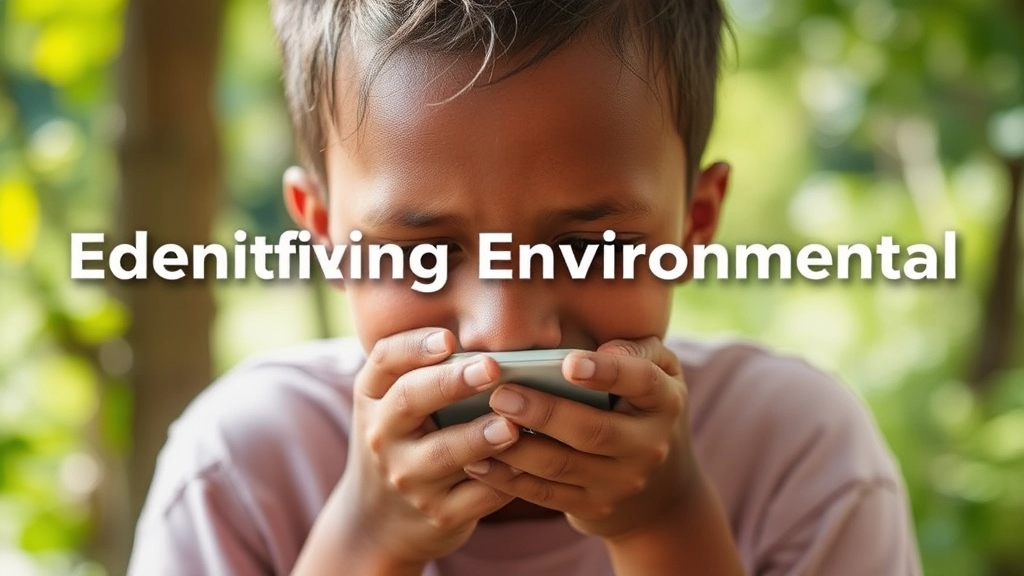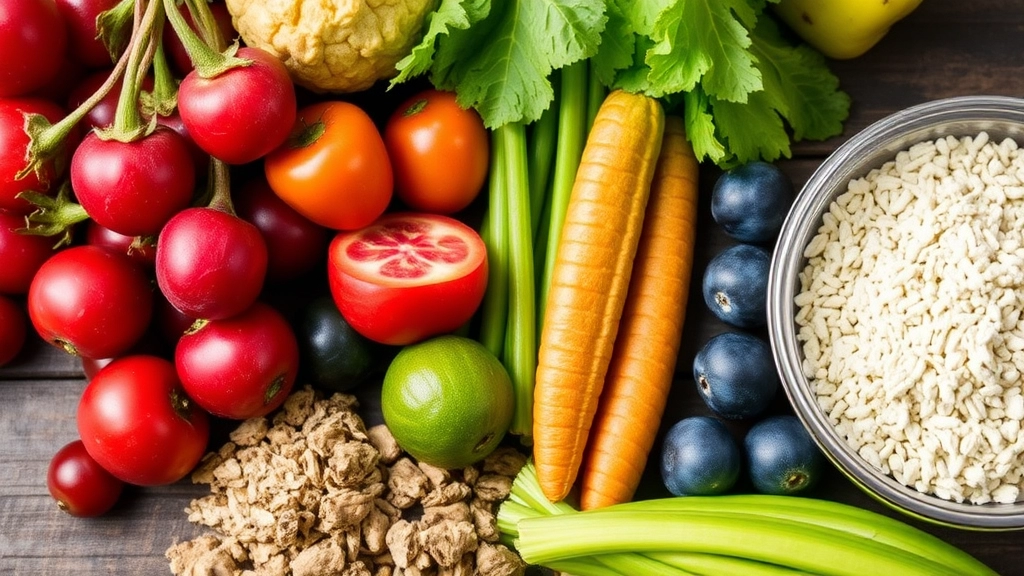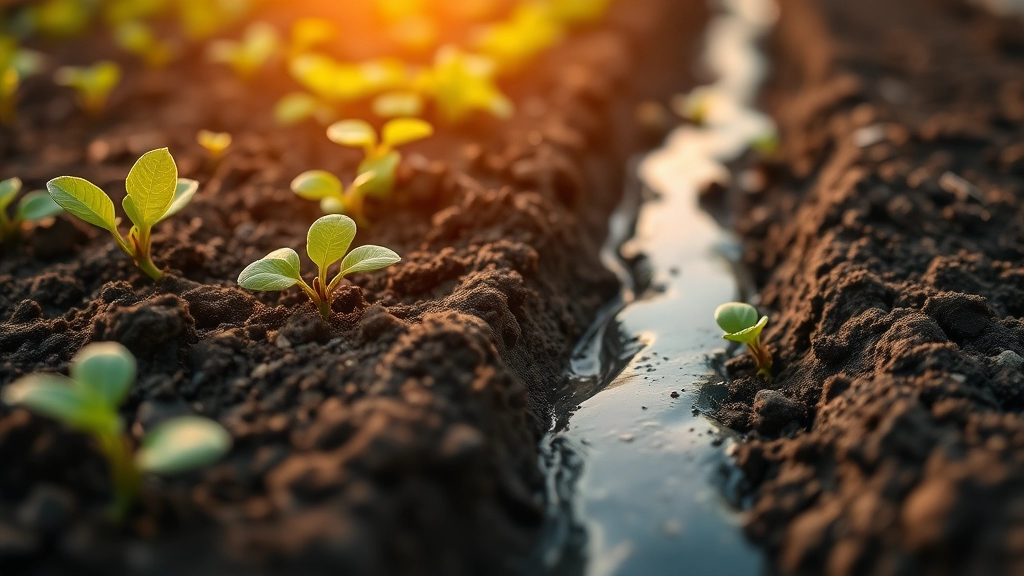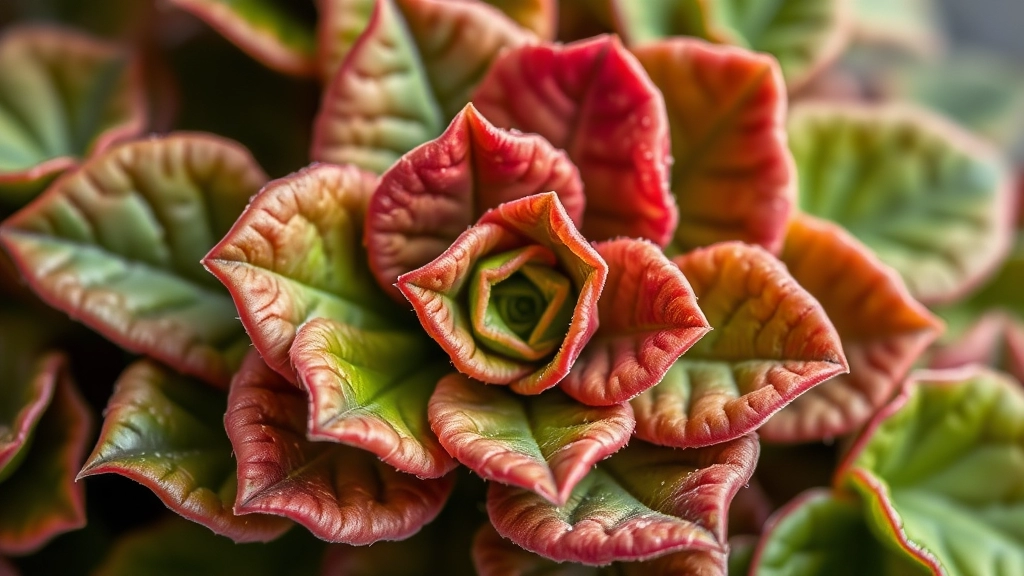Kalanchoe Leaf Curling: Understanding the Issue
If you’ve noticed your Kalanchoe leaves curling up, you’re not alone. Many plant enthusiasts face this issue, and it’s usually a sign that something’s off with your plant care routine. Don’t worry, though; I’m here to help you figure it out and get your Kalanchoe back to its healthy self.
Common Reasons for Leaf Curling
There are several reasons why Kalanchoe leaves might curl up, ranging from improper watering to inadequate light. By understanding the root cause, you can make the necessary adjustments and ensure your plant thrives. Let’s dive into the common culprits and how to fix them.
Common Causes of Kalanchoe Leaves Curling
Are you noticing the leaves of your Kalanchoe curling? This can be a frustrating experience for plant enthusiasts.
Understanding the common causes behind this curling can help you restore your plant to its former glory.
1. Environmental Stress
Kalanchoe plants are sensitive to their surroundings. Factors such as humidity, air quality, and exposure to drafts can cause stress, leading to curling leaves.
2. Watering Issues
Both overwatering and underwatering are culprits that can lead to leaf curling. It’s essential to find the right balance to keep your Kalanchoe healthy. For more tips, check out our best practices for indoor and outdoor care.
3. Nutrient Deficiencies
A lack of essential nutrients can also result in curling leaves. If your plant isn’t getting the right food, it may show signs of distress.
4. Pest Infestations
Pests like aphids or mealybugs can wreak havoc on your Kalanchoe. Their presence can lead to curling leaves as they sap the plant’s vitality. Learn how to treat and prevent Kalanchoe white bugs effectively.
5. Temperature Extremes
Kalanchoes thrive in specific temperature ranges. Sudden changes or extremes can cause the leaves to curl as a protective measure.
6. Light Requirements
Too much or too little light can also affect your Kalanchoe. Finding the right spot for it to soak up the sun is crucial for its health.
7. Soil Quality
Poor soil quality or inadequate drainage can lead to root problems, which in turn affect the leaves.
Identifying Environmental Stress Factors

Ever looked at your Kalanchoe and thought, “What’s going on with those leaves?”
If they’re curling, it’s often a sign of environmental stress.
Let’s dive into some common culprits that might be messing with your plant’s vibe.
1. Humidity Levels
Kalanchoes thrive in moderate humidity.
If your home is too dry, especially during winter, the leaves might curl up in protest.
- Solution: Consider using a humidifier or placing a tray of water near your plant to boost moisture.
2. Airflow Issues
Stagnant air can lead to stress.
If your plant is tucked away in a corner, it might not be getting the airflow it craves.
- Solution: Position your Kalanchoe in a spot where air circulates freely.
3. Sudden Changes
Plants are creatures of habit.
If you’ve recently moved your Kalanchoe or changed its environment, it might react negatively.
- Solution: Try to maintain a consistent environment for your plant.
4. Drafts and Temperature Fluctuations
Kalanchoes dislike sudden temperature shifts.
Drafts from windows or doors can cause the leaves to curl as they try to cope.
- Solution: Keep your plant away from drafty areas, and aim for a stable temperature.
Watering Issues and Solutions
Are your Kalanchoe leaves curling, and you suspect it might be related to watering? You’re not alone in this concern. Overwatering and underwatering are common culprits that can lead to stress in these beautiful succulents.
Understanding Watering Needs
Kalanchoe plants thrive in well-draining soil and prefer their roots to dry out between waterings. Here’s a quick breakdown:
- Overwatering: This can cause root rot, leading to curling leaves. Symptoms include yellowing leaves and a mushy stem.
- Underwatering: If you notice shrivelling leaves, it’s a sign your plant is thirsty. The leaves may curl inward as a protective mechanism.
Solutions for Optimal Watering
To ensure your Kalanchoe stays healthy, consider these simple solutions:
- Check Soil Moisture: Use your finger to feel the soil about an inch deep. If it’s dry, it’s time to water.
- Watering Schedule: In general, water every 2-3 weeks during the growing season (spring and summer) and reduce frequency in the dormant months (autumn and winter).
- Drainage: Ensure your pot has drainage holes. This prevents excess water from sitting at the bottom, reducing the risk of root rot.
Tips for Effective Watering
- Use Room Temperature Water: Cold water can shock the roots.
- Water the Soil, Not the Leaves: Direct water at the base of the plant to avoid fungal issues on the leaves.
By keeping a close eye on your watering habits, you can significantly improve the health of your Kalanchoe and prevent those pesky curling leaves. For more detailed guidance, check out our watering tips for Kalanchoe. Additionally, if you’re dealing with drooping leaves, our guide on fixing drooping Kalanchoe leaves might be helpful.
Nutrient Deficiencies and Remedies

Have you noticed your Kalanchoe leaves curling and wondered if nutrient deficiencies could be the culprit?
Nutrient imbalances can significantly affect your plant’s health.
Common Nutrient Deficiencies:
- Nitrogen Deficiency:
- Symptoms: Yellowing leaves, stunted growth.
- Remedy: Use a balanced fertiliser that includes nitrogen.
- Phosphorus Deficiency:
- Symptoms: Dark green or purplish leaves.
- Remedy: Apply a fertiliser high in phosphorus.
- Potassium Deficiency:
- Symptoms: Browning leaf edges and curling.
- Remedy: Incorporate a potassium-rich fertiliser.
- Calcium Deficiency:
- Symptoms: Leaf curling and tip burn.
- Remedy: Use lime or gypsum to add calcium to the soil.
- Magnesium Deficiency:
- Symptoms: Interveinal chlorosis, where leaf veins remain green while the spaces between turn yellow.
- Remedy: Epsom salt can be mixed into the soil or diluted in water.
To prevent these deficiencies, it’s essential to:
- Test Soil Regularly: Check pH and nutrient levels.
- Fertilise Appropriately: Use a slow-release fertiliser during the growing season.
- Observe Plant Health: Regularly monitor your Kalanchoe for signs of nutrient issues.
Pest Infestations and Control Methods
Have you noticed your Kalanchoe leaves curling, and suspect pests might be the culprit?
Pest infestations can wreak havoc on your plants, leading to stress and, ultimately, curling leaves.
Effects of Temperature Extremes

Ever noticed your Kalanchoe leaves curling and wondered if it’s the heat or the chill?
Temperature extremes can really throw a wrench in the works for our beloved plants.
Too Hot to Handle?
When temperatures soar above 30°C (86°F), Kalanchoes can go into survival mode.
They might curl their leaves to reduce surface area and conserve moisture.
Chilly Challenges
On the flip side, if your Kalanchoe is exposed to temperatures below 10°C (50°F), it can suffer too.
Cold drafts or sudden temperature drops can lead to leaf curling as the plant tries to protect itself.
What to Watch For:
- Leaf Curling: Look for leaves curling inward or downward.
- Discoloration: Yellowing or browning edges can signal distress.
- Stunted Growth: If your plant isn’t growing as it should, temperature might be the culprit.
Quick Fixes:
- Location, Location, Location: Keep your Kalanchoe in a stable environment, away from heaters or air conditioners.
- Temperature Check: Aim for a comfortable range of 15°C to 25°C (59°F to 77°F).
- Gradual Changes: If you need to move it, do so gradually to avoid shock.
Light Requirements and Adjustments
Are your Kalanchoe leaves curling despite your best efforts? One common culprit might be the light conditions.
Kalanchoes thrive in bright, indirect sunlight. However, they can become stressed if they receive too much direct sunlight or not enough light at all.
Signs of Improper Light Exposure:
- Too Much Sunlight: Leaves may become scorched, turn brown, or curl.
- Too Little Sunlight: Growth may slow down, and leaves may become leggy or pale.
To ensure your Kalanchoe is getting the right amount of light, consider these adjustments:
- Location: Place your plant near a window that receives filtered light. South or west-facing windows are ideal.
- Rotation: Rotate your plant every couple of weeks to promote even growth.
- Supplemental Lighting: If natural light is insufficient, consider using grow lights for 12-14 hours a day.
Quick Tips for Light Management:
- Observe your plant daily for signs of stress.
- Adjust its position seasonally as sunlight intensity changes.
- Use sheer curtains to diffuse harsh sunlight.
For more detailed guidance on addressing leaf curling, check out our Causes and Solutions for Kalanchoe Leaves Curling page. Additionally, if your plant is becoming leggy, our Pruning Leggy Kalanchoe guide offers step-by-step care tips.
Soil Quality and Drainage

Ever wondered why your Kalanchoe leaves are curling up like a taco?
One sneaky culprit could be the soil quality and drainage.
Let’s break it down.
Why Soil Matters
The right soil is essential for healthy Kalanchoe plants. Poor soil can lead to root rot and nutrient deficiencies.
Here’s what to look for:
- Well-Draining Soil: Kalanchoes thrive in soil that drains well. Look for a mix that includes perlite or sand.
- pH Level: Ideally, the soil should be slightly acidic to neutral (around 6.0 to 7.0). You can check this with a pH meter.
- Nutrient-Rich: Make sure your soil has a good balance of nutrients. A mix designed for succulents is often a safe bet.
Drainage is Key
Now, let’s chat about drainage.
If your pot doesn’t have drainage holes, you’re asking for trouble.
- Choose the Right Pot: Always opt for pots with drainage holes to prevent water from pooling.
- Use a Drainage Layer: Consider adding a layer of gravel or small stones at the bottom of your pot. This helps excess water escape.
Signs of Poor Soil and Drainage
How do you know if your soil is letting you down?
- Leaves Curling: This often indicates stress from overwatering or poor drainage.
- Mold or Foul Smell: If you spot mold or your soil smells off, it’s time for a change.
- Stunted Growth: If your plant isn’t growing as it should, the soil may be lacking nutrients.
Quick Tips for Healthy Soil and Drainage
- Repot Regularly: Consider repotting every couple of years to refresh the soil.
- Check Moisture Levels: Stick your finger in the soil; if it’s soggy, hold off on watering.
- Use Quality Soil Mix: Invest in a quality cactus or succulent mix for the best results.
Preventive Measures for Healthy Leaves
As we explore ways to maintain the health of your Kalanchoe, it’s essential to understand that prevention is often more effective than treatment.
Are your Kalanchoe leaves curling, wilting, or showing signs of distress?
Here are some straightforward preventive measures to keep your plants thriving:
- Regular Monitoring: Check your plants weekly for any signs of stress or pests. Early detection can save you a lot of hassle.
- Proper Watering: Ensure you water your Kalanchoe only when the top inch of soil feels dry. Overwatering is a common culprit for leaf curling.
- Quality Soil: Use well-draining soil to prevent root rot. A mix designed for succulents is ideal.
- Balanced Fertilization: Apply a diluted, balanced fertiliser during the growing season. This provides essential nutrients without overwhelming your plant.
- Optimal Light Conditions: Place your Kalanchoe in bright, indirect sunlight. Too much direct sun can scorch the leaves, while too little can stunt growth.
- Humidity Control: Kalanchoe prefers low humidity. Keep them in a dry environment to avoid fungal issues.
- Temperature Awareness: Maintain a stable temperature between 15-25°C. Avoid sudden temperature changes.
- Pest Prevention: Regularly inspect for pests like mealybugs and aphids. A simple rinse with water can help deter these nuisances.
For more detailed guidance on keeping your Kalanchoe healthy, refer to our Complete Guide to Kalanchoe Plant Care and learn how to treat black spots on Kalanchoe leaves effectively.
When to Seek Professional Help for Kalanchoe Leaves Curling
So, you’ve done your best to care for your Kalanchoe, but those leaves just won’t cooperate.
You might be wondering, “When is it time to call in the experts?”
Here are some signs that it’s time to seek professional help:
- Persistent Curling: If the leaves keep curling despite your best efforts, it might indicate a deeper issue. Learn more about potential causes and solutions in our guide on Kalanchoe leaf spot causes, treatment, and prevention.
- Rapid Decline: If your plant is wilting or losing leaves quickly, don’t wait too long. Time is of the essence!
- Severe Pest Infestation: If you spot pests like mealybugs or aphids, and your DIY methods aren’t cutting it, professional pest control might be necessary.
- Mysterious Spots or Discoloration: If you notice odd spots or unusual colours on the leaves that you can’t identify, it’s a red flag.
- Unusual Growth Patterns: If your Kalanchoe is growing in a way that seems off, like stretching too much or not flowering as expected, it’s worth getting a second opinion. Check out our proven tips to get your Kalanchoe to bloom again.
Remember, it’s perfectly okay to ask for help. Sometimes, a fresh pair of eyes can spot issues we miss.
FAQs about Kalanchoe Leaves Curling Up
What causes Kalanchoe leaves to curl up?
Kalanchoe leaves curl up primarily due to environmental stress factors such as low humidity, poor airflow, sudden changes in environment, and temperature fluctuations. Nutrient deficiencies and poor soil quality can also contribute to leaf curling.
How can I improve humidity levels for my Kalanchoe?
If your home is too dry, especially during winter, consider using a humidifier or placing a tray of water near your plant to boost moisture levels.
Why is airflow important for my Kalanchoe?
Stagnant air can stress your Kalanchoe. Ensure your plant is positioned in a spot where air circulates freely to prevent leaf curling.
Can sudden changes in environment affect my Kalanchoe?
Yes, Kalanchoes are sensitive to sudden changes. Try to maintain a consistent environment to keep your plant healthy.
What are the effects of temperature extremes on Kalanchoe leaves?
Extreme temperatures can cause Kalanchoe leaves to curl. High temperatures above 30°C (86°F) and low temperatures below 10°C (50°F) can both lead to stress and leaf curling.
How do I identify nutrient deficiencies in my Kalanchoe?
Look for specific symptoms such as yellowing leaves, stunted growth, dark green or purplish leaves, browning leaf edges, and tip burn. Each symptom corresponds to a different nutrient deficiency.
What are some common nutrient deficiencies affecting Kalanchoe leaves?
Common deficiencies include:
- Nitrogen: Yellowing leaves, stunted growth.
- Phosphorus: Dark green or purplish leaves.
- Potassium: Browning leaf edges and curling.
- Calcium: Leaf curling and tip burn.
- Magnesium: Interveinal chlorosis (yellowing between veins).
How can I improve soil quality and drainage for my Kalanchoe?
Use well-draining soil, ideally a mix that includes perlite or sand. Ensure the soil pH is slightly acidic to neutral (around 6.0 to 7.0). Always use pots with drainage holes and consider adding a layer of gravel or small stones at the bottom of the pot to help excess water escape.
What are the signs of poor soil and drainage in Kalanchoe plants?
Indicators include leaf curling, mold or foul smell in the soil, and stunted growth. These signs suggest that the soil may be waterlogged or lacking essential nutrients.
How often should I repot my Kalanchoe?
Consider repotting your Kalanchoe every couple of years to refresh the soil and ensure it remains nutrient-rich and well-draining.
What temperature range is ideal for Kalanchoe plants?
Aim to keep your Kalanchoe in a stable environment with temperatures ranging from 15°C to 25°C (59°F to 77°F) to prevent stress and leaf curling.
References
-
Why Are My Kalanchoe Leaves Curling?
-
How to Grow and Care for Kalanchoe
-
Kalanchoe: How to Grow and Care for Kalanchoe Plants
